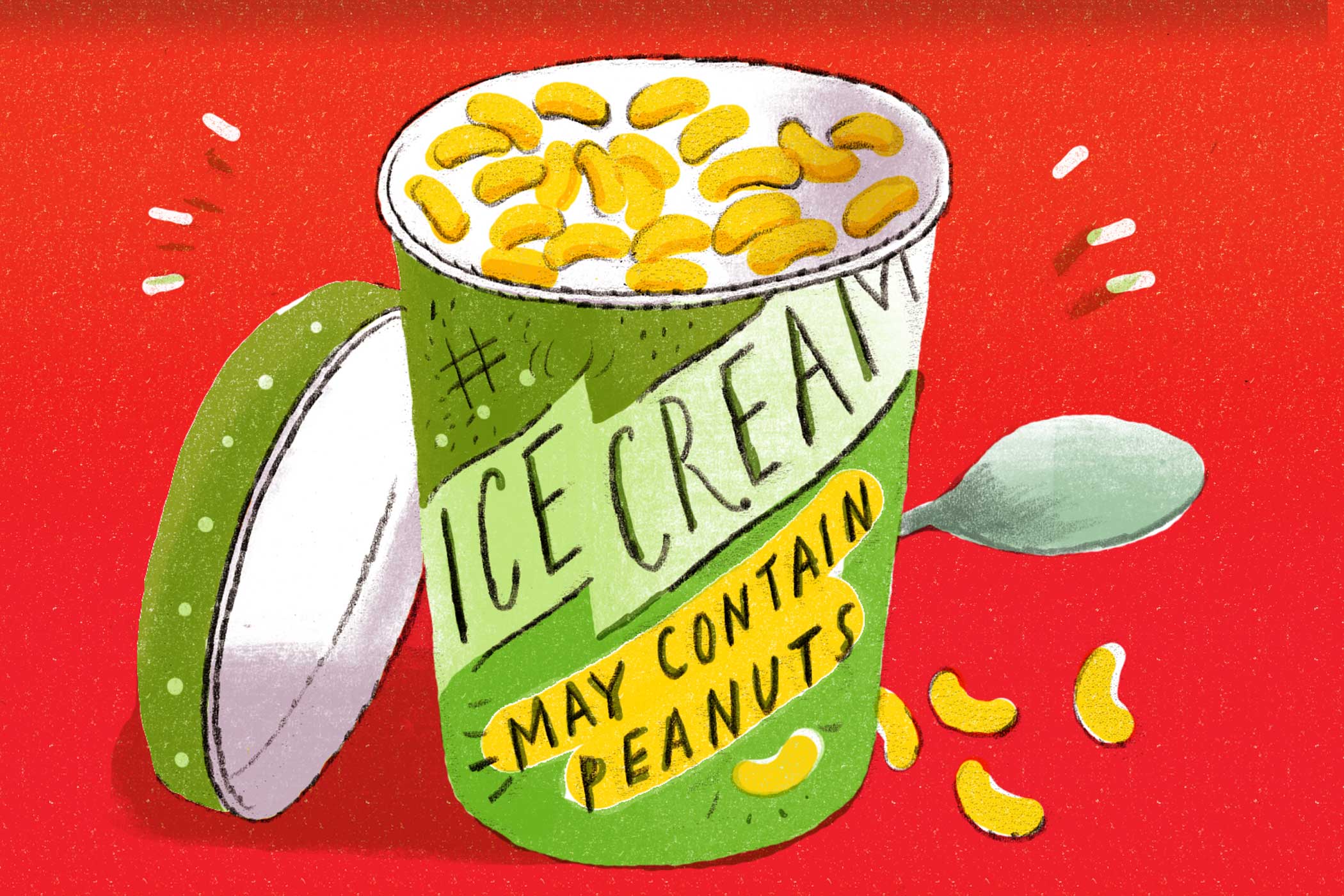
When you’re trying to shop for a child with a severe peanut allergy, wishy-washy language is the last thing you want to see on a food label. So when you read warnings that begin “May contain traces of…” or “Manufactured on equipment also used for…” you may be left scratching your head.
Believe it or not, all of those “may contain” statements are voluntary under current Food and Drug Administration (FDA) regulations. While not required, food manufacturers sometimes choose to include them if there’s a chance an allergen snuck its way into your food.
“A manufacturer might use the same equipment to make different products,” explains Megan McSeveney, a press officer with the FDA. Even after cleaning this equipment, a small amount of an allergen may inadvertently end up in the next product the machine processes. In this situation, a manufacturer might include a “may contain” advisory statement, McSeveney says.
The FDA is working on new rules that would tighten regulations on this kind of cross-contamination. But for now, if you or a loved one has a severe allergy, your only safe bet is to read “may contain” as “likely contains” when it comes to label warnings, the FDA says.
That raises some important questions. For one, if “may contain” statements are voluntary, doesn’t that mean a lot of potentially contaminated food products don’t include any warnings at all? And couldn’t haphazard food manufacturers just slap on a “may contain” statement to make up for their shoddy practices?
“Companies cannot use voluntary advisory labeling in lieu of good manufacturing practices,” McSeveney says. She says the FDA can seize products with inaccurate allergen information or take other actions to ensure compliance. But, in most cases, “firms generally recall such food products from the marketplace voluntarily when they become aware of a problem,” she says.
Basically, no one is trying to hoodwink consumers—or expose someone with an allergy to a potentially harmful ingredient.
If a food product is made with any one of the eight major food allergens—milk, egg, fish, crustacean shellfish, tree nuts, wheat, peanuts and soybeans—then its label has to identify that allergen either in its ingredients list or in a “contains” statement right next to the ingredients list, McSeveney explains. Also, she says this identification has to feature the allergen’s “food source name”. That means if a product contains something like casein, which is a type of milk protein, the label has to include the word “milk” somewhere in the ingredients list or accompanying “contains” statement.
When it comes to potential allergens outside of that list of eight—gluten, for example—the FDA does not require a manufacturer to include a warning. You still may see statements like “gluten-free” on food labels. But McSeveney says that, much like “may contain” statements, any “free” from statements are voluntary. Though optional, they’re still subject to the FDAs general misbranding requirements. So rest assured, food manufacturers can’t simply lie to you without repercussions.
Though there’s certainly room for improvement in the current labeling system, up until 2006, the FDA didn’t mandate any allergy warnings. So historically speaking, the world today is a lot less uncertain for food allergy sufferers.
It might be an unsatisfying answer, but the bottom line is that life comes with an implicit “may contain” warning.
More Must-Reads From TIME
- The 100 Most Influential People of 2024
- Coco Gauff Is Playing for Herself Now
- Scenes From Pro-Palestinian Encampments Across U.S. Universities
- 6 Compliments That Land Every Time
- If You're Dating Right Now , You're Brave: Column
- The AI That Could Heal a Divided Internet
- Fallout Is a Brilliant Model for the Future of Video Game Adaptations
- Want Weekly Recs on What to Watch, Read, and More? Sign Up for Worth Your Time
Contact us at letters@time.com